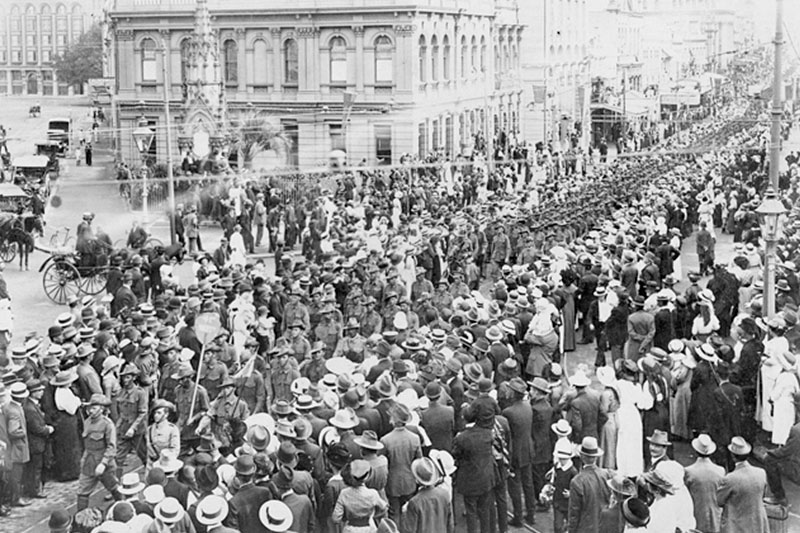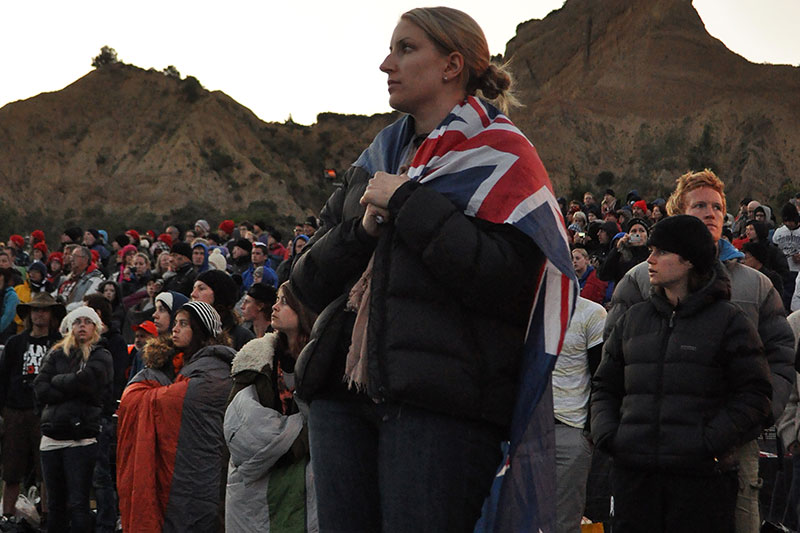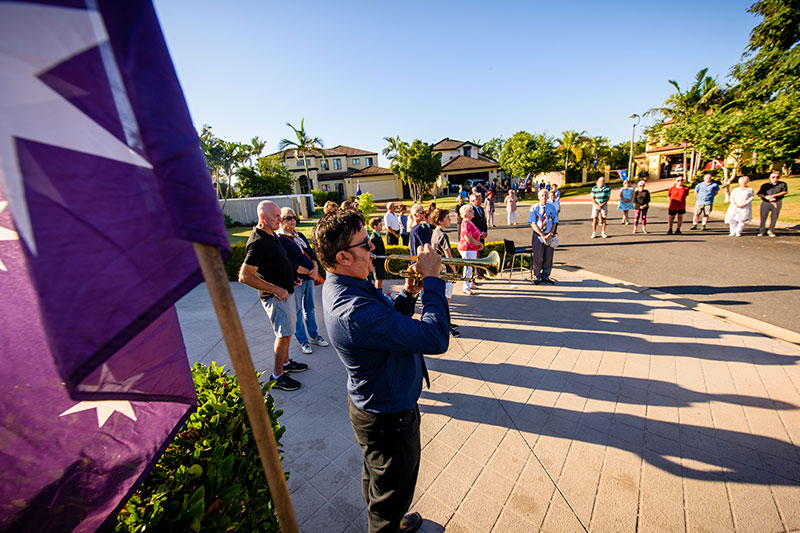
Looking back at 110 years of the ANZAC legend
28 March 2025- ANZACspirit
- History & commemoration
This ANZAC Day marks a significant anniversary – 110 years since the Gallipoli landings of 1915.
In April 1916, the first anniversary of the landing of the ANZAC forces at Gallipoli was marked in Australia and abroad. In London, Australian officials organised a sombre ‘celebration,’ with a march of 2,000 Australian and New Zealand troops to Westminster Abbey, followed by a remembrance service attended by the King, Queen and Australian Prime Minister.
In Australia, communities marked the day in various ways, including church services, speeches, wreath-laying and military parades.

ANZAC Day in Brisbane in 1916 (image credit Australian War Memorial)
The evolution of ANZAC Day traditions
Throughout the 1920s, ANZAC Day continued to evolve. By 1927, it was formally recognised in all states. Some ANZAC Day rituals – such flag-waving, church services, wreath laying and marches – were already established as a familiar part of Australia’s military memorial practices, helping ease the grief of thousands of bereaved families.
Other elements – such as the Dawn Service and two minutes’ silence – evolved as distinctly ANZAC in nature. By the mid-1930s, the traditional structure of ANZAC Day had been established, featuring a Dawn Service, a parade, unit reunions and games of two-up.

A Dawn Service in Redcliffe, Brisbane
ANZAC Day in wartime and beyond
By the early 1940s, Australia was again at war. While elements of the Defence Force participated, ANZAC Day remained focused on returned veterans. A WWI veteran typically led a parade of returned men and nurses, bands and serving personnel.
By the end of WWII, the appearance of the day had changed. Younger participants joined their older comrades, and for the first time, members of the Royal Australian Air Force and Women’s Auxiliary Services participated in remembrance.

Flag waves at the Brisbane ANZAC Day march
ANZAC Day under scrutiny
From the mid-1960s, changing societal attitudes towards war and the competing agendas of minority groups made ANZAC Day increasingly contentious. Anti-war protestors used 25 April to oppose Australia’s involvement in Vietnam, while the Women Against Rape movement regularly disrupted events in Melbourne and Sydney during the 1980s.
A defining moment of this era came in 1982 at Melbourne’s Shrine of Remembrance, when returned serviceman and RSL Victoria President Bruce Ruxton confronted members of the Gay Ex-Servicemen’s Association as they attempted to lay a wreath. With WWI veterans dwindling, some commentators speculated that ANZAC Day might soon disappear.
A resurgence of national interest
Rather than fading away, 25 April experienced an unexpected revival in the 1990s. A growing public interest in family history and the Commonwealth Government’s active support helped renew engagement with the day.
Anzac Cove had long been a popular destination for Australians, but the 75th anniversary of the landing marked a turning point. Bob Hawke became the first Australian Prime Minister to visit Gallipoli, and a telecast of the Dawn Service showed elderly ANZACs and young Australian backpackers united in solemn reflection.
Attendance at Anzac Cove surged, and the ‘pilgrimage’ to Gallipoli became a significant commemorative tradition.

Many Australians now make the trek to Gallipoli for ANZAC Day
The centenary of ANZAC
In 2015, the ANZAC legend turned 100. Mindful of the popularity of the event, the Turkish Government restricted visitor numbers to preserve Anzac Cove. A ballot was introduced to ensure fair access, with 42,273 Australians applying for one of the 4,000 double passes allocated to Australia. Around the country, record crowds attended local Dawn Services and ANZAC Day parades.
The impact of COVID-19
The COVID-19 pandemic in 2020 led to widespread lockdowns, disrupting ANZAC Day commemorations. It was not the first time a health crisis had postponed the event – over a century earlier, the Spanish Influenza pandemic had led to similar restrictions in Sydney.
Rather than forego the tradition, communities across the nation were encouraged to ‘Light Up the Dawn’, gathering in driveways to honour the occasion in a socially distanced tribute.

A Light Up the Dawn service in Brisbane during the COVID-19 pandemic
A legacy that endures
As we mark the 110th anniversary of the Gallipoli landing in 2025, the ANZAC tradition remains strong. It has weathered many challenges and evolved to reflect the changing times. Yet, at its core, it continues to honour the service and sacrifice of those who have followed in the footsteps of the original ANZACs.
This ANZAC Day
ANZAC Day (25 April) is a time to recognise all who have served our nation, and their invaluable legacy.
Wherever you’ll be on ANZAC Day, please join the community in attending a commemorative service.
There’s no greater way to honour those who have served.
